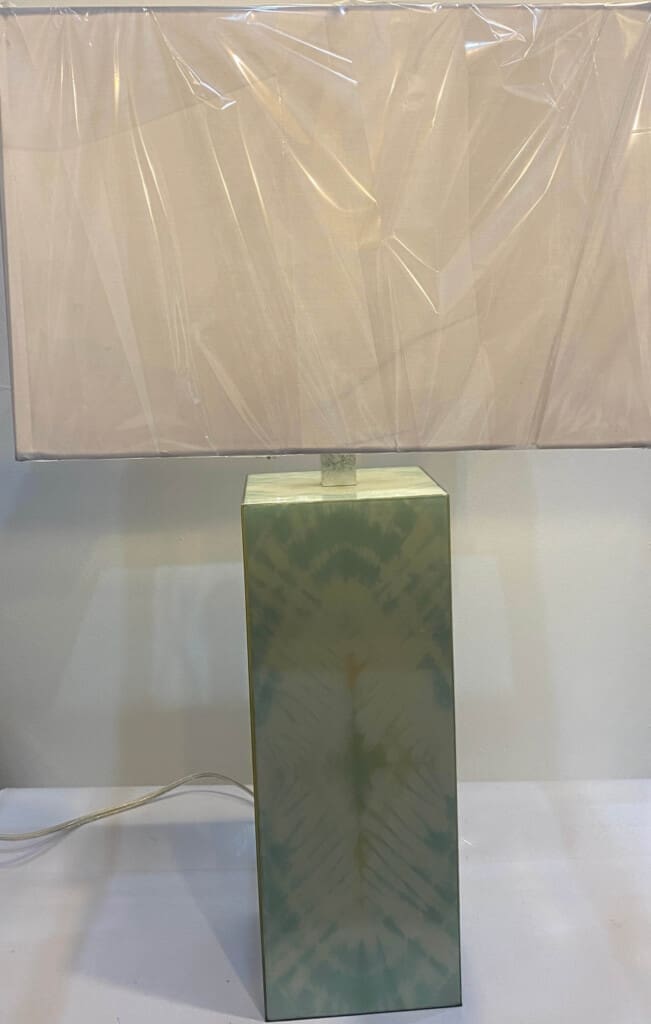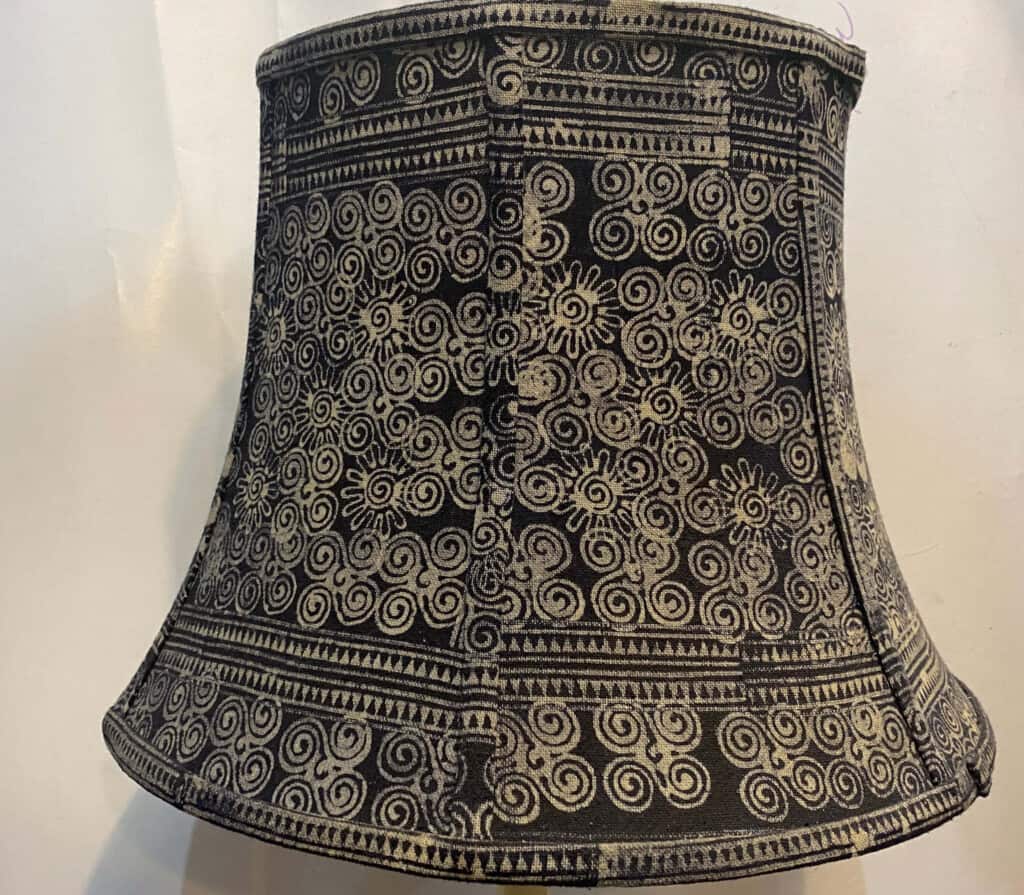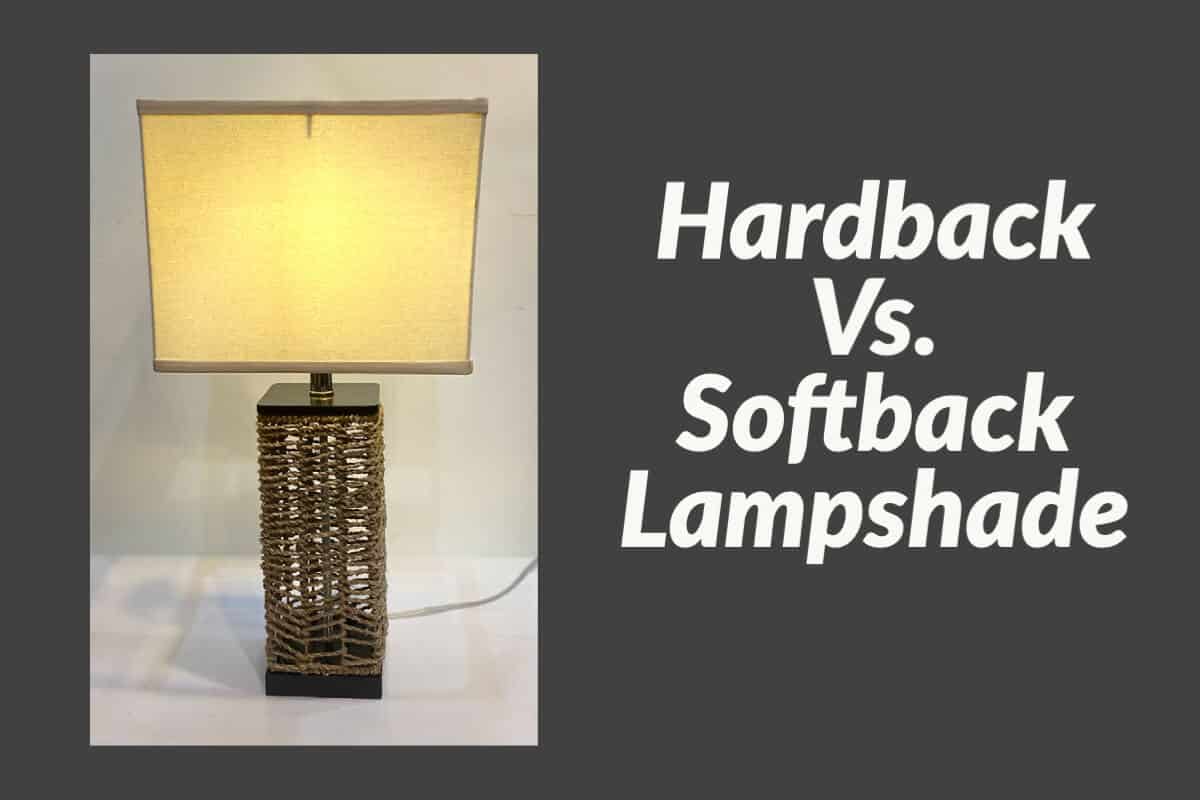Two basic types of lampshades are used for lamps; knowing the difference between hardback and softback shades can help you understand what shade is best for your lamp.
A hardback shade is a shade where the fabric is laminated to plastic, and then the shade is made with a metal ring on the top and the bottom. A softback shade is a shade with a metal frame, and the entire shade is made from fabric. There are different reasons why a lampshade may be hardback versus softback; many of these reasons are due to the shade’s look and if the lamp is a traditional or modern-looking lamp.
Table of Contents

What is A Hardback Shade?
Hardback shades are created by laminating fabric or paper onto a hard plastic material. This laminated material is then glued and molded around two wires at the top and bottom to shape the laminated material into the lampshade.
If the shade feels hard and you could see a plastic lining inside of it then you know the shade is a hardback shade. This is the easiest way to be able to tell a hardback shade from a softback shade.
Some reasons why people will choose a hardback shade over a softback shade.
- Contemporary Design – A hardback shade can give a very nice contemporary look. The finish on the shade’s surface is completely flat, and using the right laminate it will give a very nice glow to the lampshade.
- Simple, Clean Lines – Hardback shades usually have simple and clean lines. The hardback shades are usually uniform and sleek.
- Versatile – Hardback shades are very versatile, meaning that they will fit into most kinds of home decor and interiors. This versatility is one reason why in the last 10 years, hardback shades have continued to gain in popularity.
- Gold Inside – A hardback shade can have a gold lining inside. Some people prefer to have white or black linen outside the shade and a gold finish inside. This type of look works very well with a hardback shade.
- Drum or Tapered Shade – Many hardback shades are drum shades, meaning they are round like a drum. Hardback shades can also be tapered where the top is smaller than the bottom of the shade.
- Cost-Effective – Most hardback shades are less expensive than their softback shade counterparts. This is because less fabric is used in the manufacture of hardback shades versus softback shades.

What Is A Softback Shade?
Softback shades are manufactured using only fabric and a wireframe. This is different from a laminated hardback shade that uses; a softback shade does not have any lamination but only uses a metal frame covered by the fabric.
One of the easiest ways to tell if your shade is a softback shade is by looking inside the shade and touching the shade. If the lampshade feels soft all the way through the shade – meaning there is no plastic inside the shade – then your shade is a softback shade.
Some reasons why people will choose a softback shade over a hardback shade:
- Pleats, Tucks, Gathers, and Smocking – You can have pleats, tucks, gathers, and smocking on the shade with a softback shade. You cannot do all of these things with a hardback shade. This is why many people will use a softback shade, as they want to have these decorative elements on it.
- Trimmings on the Shade – If you want to have a trimming sewn on the shade, this works much better on a softback shade than a hardback shade. For example, some people may want to have a shade with a tassel trim hanging down; normally, this is done with a softback shade.
- The Shape of Shades – There are some shapes of the shades that do not do well with a hardback shade and can only be done with a softback shade. This would also be another reason for using a softback shade versus a hardback shade.
- Traditional Look – A softback shade is normally considered a more traditional-looking shade than a hardback shade. This is because this shade was traditionally used for lamps and lighting.
- Fabric Choices – Sometimes, the difference between a hardback shade and a softback shade may be the actual fabric you’re using. We have used some fabric that did not do well with a hardback shade because of the heat required with the laminate process, so our only choice was to manufacture a softback shade.
Choosing a hardback or softback shade will depend a lot upon what type of shade fits with your lamp base style. It may simply be the most cost-effective shade. There is really no right or wrong shade style – the shade that is right for your lamp is a shade that fits your lamp’s design.
If you are interested in UL certified lamps for your home decor and home furnishing collection, we would love to hear from you and see how we are able to help you.
Find out more about how Mondoro can help you create, develop, and manufacture excellent home decor and furniture products – don’t hesitate to contact me, Anita. Check out my email by clicking here or become a part of our community and join our newsletter by clicking here.
Mondoro gives out a FREE Lookbook to anyone interested. You can receive a copy of our latest Lookbook by clicking here.
Listen to our Podcast called Global Trade Gal. You can find it on all major podcast platforms. Try out listening to one of our podcasts by clicking here.
Subscribe to our Mondoro Company Limited YouTube Channel with great videos and information by clicking here.
Related Questions
What is the PVD Stainless Steel Coating Used On Home Decor Products?
PVD coatings are thin yet highly durable coating placed on many different kinds of substrates, including stainless steel. A vacuum chamber with very high temperatures is used to apply the PVD coating. Though this finish is used a lot in the tech, medical and aerospace industries, it is also used for home decor and home furniture products.
You can read our blog on What is the PVD Stainless Steel Coating Used On Home Decor Products? by clicking here.
What Are Some Great Vietnamese Home Décor Product Finishes and Techniques?
There are many techniques, materials, and finishes that we love in Vietnam, but some of our favorite ones are Vietnamese lacquer, mother of pearl, eggshell, and faux paper finishes. We also do some unique woven rattan and linen techniques. Both spun bamboo, water hyacinth, and seagrass are some great natural looks. Vietnam also offers some amazing ceramic finishes and techniques. And they have thriving outdoor furniture and accessories products in some interesting finishes and techniques.
You can read our blog on 10 Great Vietnamese Home Décor Product Finishes and Techniques We Love by clicking here.

